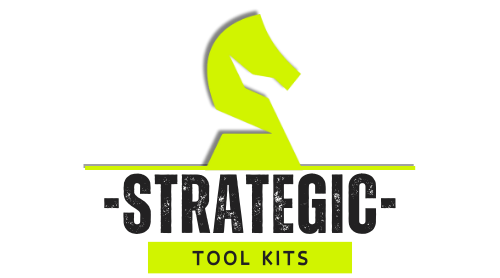The flywheel concept in business is a strategic approach where small, consistent actions build momentum, leading to significant long-term growth. This concept emphasizes how repeated efforts can accumulate and create powerful forward motion.
Forget about quick fixes. The flywheel requires patience and persistence. But you will pay for it, believe me. The results of such a concept guarantee the sustainability of the company, even in a highly competitive market in challenging industries.
Basics of the Flywheel Concept
The flywheel concept revolves around creating momentum through continuous improvement. Initially, the effort to get the flywheel moving is substantial. However, as the wheel gains speed, the same amount of effort results in more significant movement.
Analogously, the investments you have at the beginning lead to exponential growth over time. I say “over time” on purpose, because you won’t get immediate results. So, it is crucial that you are able to overcome the early stages in order to reach the long-term goals you have set out.
Principles of the Flywheel Concept
The flywheel concept highlights how successful companies achieve greatness through steady, incremental improvements. The concept contrasts with the approach where companies react hastily to challenges without a cohesive strategy, leading to inconsistent results.
The flywheel principle focuses on building a foundation where each positive action reinforces the next, creating a self-sustaining cycle of growth.
Components
- Attract: Draw in potential customers with engaging content and a strong online presence. Use SEO, social media, and targeted advertising to gain visibility.
- Engage: Provide easy access to information about your products or services. Utilize free trials, demos, and user-friendly purchase options.
- Delight: Ensure customers have a seamless experience with your product. Offer comprehensive support and continually seek feedback to improve your offerings.
Each of these components feeds into the next, creating a cycle that builds momentum over time. By focusing on reducing friction at each stage, businesses can ensure that the flywheel spins faster and more efficiently.
Case Study: Amazon’s Flywheell
Amazon is a prime example of the flywheel effect in action. The company’s flywheel starts with a focus on customer experience. By offering a wide selection of products at competitive prices and ensuring fast, reliable delivery, Amazon attracts more customers.
This increase in customer base allows Amazon to negotiate better deals with suppliers, which leads to lower prices and an even better customer experience. This cycle continues, driving growth and reinforcing Amazon’s market position. Read on for more details on this topic here.
Practical Applications
To implement the flywheel concept, businesses must identify the core components that drive their growth. These might include product development, customer service, marketing strategies, or operational efficiency.
The key is to ensure that each component builds upon the previous one, creating a seamless flow that propels the business forward.
For instance, a company might start by improving its product quality, leading to better customer satisfaction. Satisfied customers are likely to make repeat purchases and recommend the product to others, increasing sales. Increased sales provide more revenue to invest in further product improvements, continuing the cycle.
Challenges and Considerations

While the flywheel effect can lead to significant growth, it is not without challenges. One major hurdle is the initial effort required to get the flywheel moving. Businesses must be prepared to invest considerable time and resources before seeing substantial results.
Also, maintaining momentum requires constant vigilance and adaptation. The market environment, customer preferences, and competitive landscape can all change, necessitating adjustments to the flywheel strategy.
Building a Strong Foundation
Creating a robust flywheel starts with a clear understanding of your business’s unique strengths and how they can be leveraged to create a self-sustaining cycle of growth. This might involve:
- Investing in Quality: Ensuring your products or services meet high standards can lead to customer satisfaction and loyalty.
- Focusing on Customer Experience: Providing excellent customer service and support can turn customers into brand advocates.
- Adapting to Feedback: Using customer feedback to make continuous improvements can keep your offerings relevant and valuable.
The Flywheel in Action

Several businesses across different industries have successfully implemented the flywheel concept. For example, in the technology sector, companies like Atlassian use the flywheel to enhance user experience and drive growth.
Atlassian focuses on reducing friction in the customer journey, from discovery to purchase to post-sale support. By making it easy for customers to find, try, and use their products, Atlassian ensures continuous growth and customer loyalty.
FAQs
Conclusion
Flywheel Concept in Business offers a powerful framework for achieving long-term business success. By focusing on small, consistent actions that build momentum, businesses can create a self-sustaining cycle of growth. For that, you need to be persistent and know that results do not come immediately.
For example, companies like Amazon and Atlassian demonstrate the effectiveness of flywheels, showing how strategic focus and continuous improvement can lead to significant growth. If in the first place this concept is understood and then properly applied, companies can count on long-term and stable success in a competitive market.
For more information and business growth tips, be sure to visit strategictoolkits.com.

